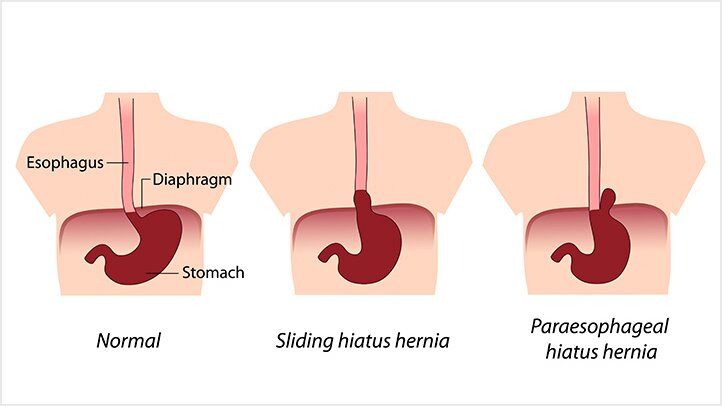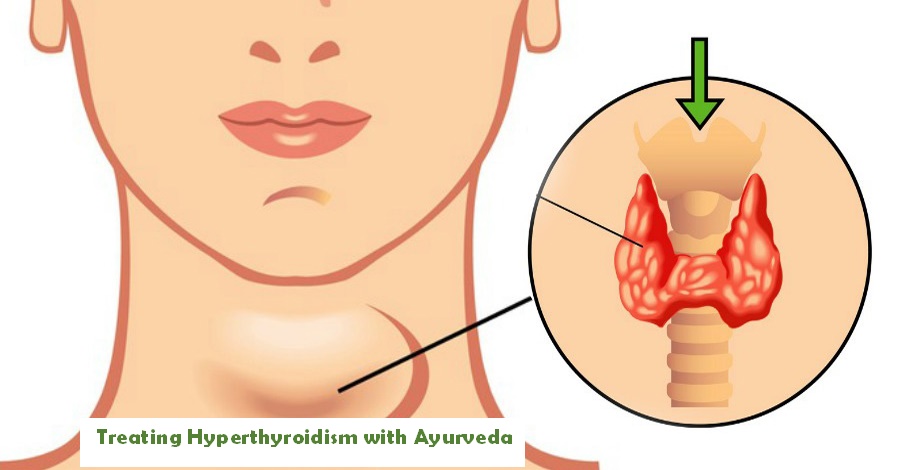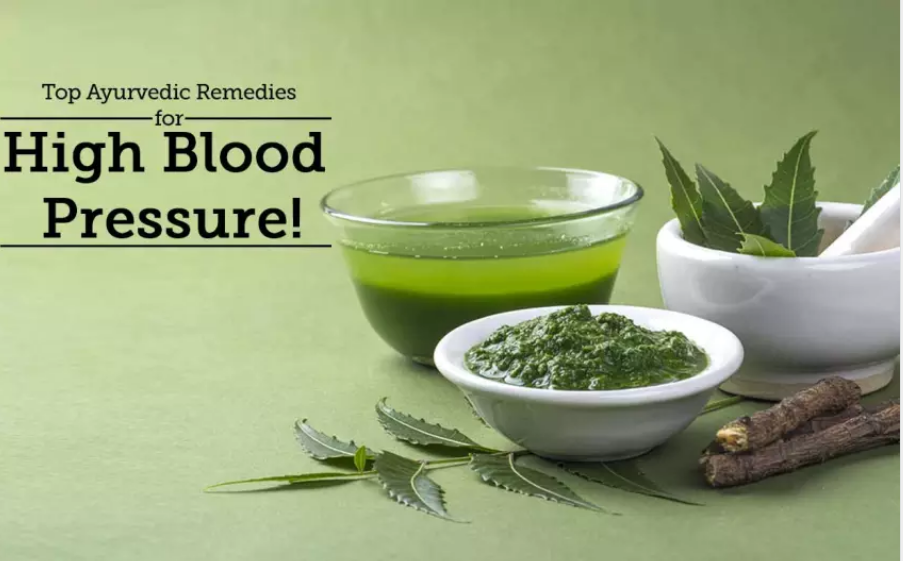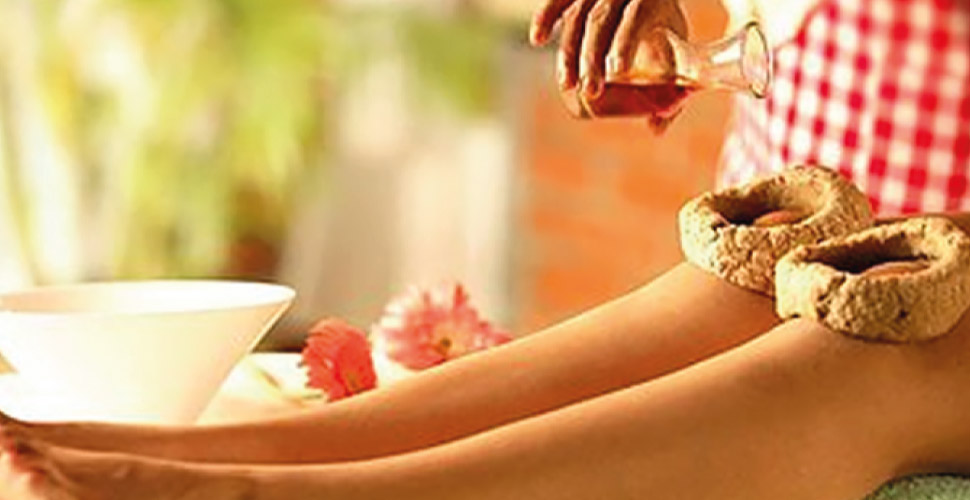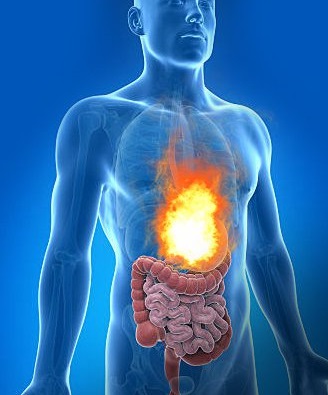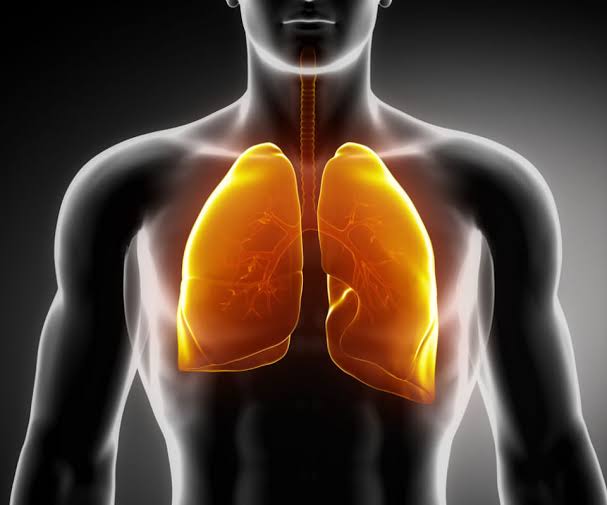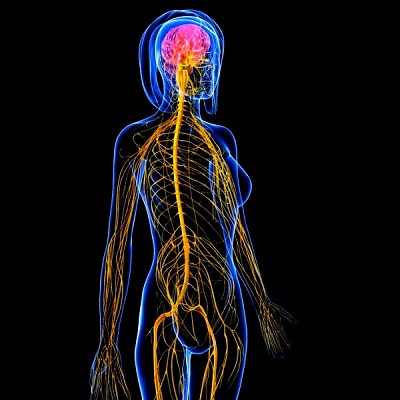“Hiatus hernia” is a common condition in middle-aged and elderly women. In this condition, the stomach protrudes through the diaphragm and up into the thoracic cavity. The portion of the stomach above the diaphragm looks like a rupture known as Vidagdhajirna in Ayurveda.
Causes of Hiatus Hernia-
Overweight, obesity and intake of spicy and sour foods are among the major causes of this disorder. Stress, anxiety, tension, anger, and fear also play a crucial role in aggravating this disease. Anatomical defects related to the oesophagus can also cause this disease. Conditions that increase intra-abdominal pressure, like intestinal obstruction and flatulence can also push the stomach upwards resulting in Hiatus Hernia.
Symptoms
- Nausea
- Heartburn
- Acid Reflux
Ayurvedic Approach
With Hiatus Hernia, one or more of the following Doshas may be aggravated—Vata, Pitta or Kapha. If you have an imbalance of one of these doshas, Ayurveda recommends avoiding foods and lifestyle habits that aggravate it. These imbalanced doshas and qualities may need to be brought back into balance before the condition can be healed.
The fluidity of Pitta Dosha increases in Vidagdhajirna and extinguishes the gastric fire, so digestion gets affected. Food starts getting fermented that leads to indigestion. Apart from the symptoms mentioned above, Ayurveda pinpoints excess sweating, thirst, vomiting, fever, giddiness, burning of eyes and unconsciousness as characteristic features of Vidagdhajirna. It may manifest into painful ulcers. Ayurvedic treatment focusses on balancing body energies and restoring healthy digestion.
Diet & Lifestyle Changes–
Structural imbalance responsible for Oesophageal hiatus hernia can be corrected by following a proper lifestyle and food regimen.
- Food intake should be regular. Late night meals should be strictly avoided.
- Fermented foods and sour eatables should be avoided. No junk foods too.
- Coffee, tea carbonated drinks and alcohol should stop.
- Spices that increase heat, like garlic, onion, ginger, pepper, chilli and cinnamon should be avoided.
- Spicy gravies, sour, salty and spicy non-veg foods are equally harmful.
Home Remedies
- Take Amalaki Churna with pure ghee or any amla[gooseberry] preparations.
- Take preparations of Shatavari regularly.
- Pomegranates are beneficial in Oesophageal hiatus hernia.
Visit the “Madras Institute of Ayurveda”, the centre of Ayurvedic medicine and treatment in Chennai. The centre possesses an in-patient department with perfectly equipped Panchakarma Theatres. Successful treatment programs for an entire spectrum of diseases are offered here. It has a full out-patient department with facilities for consultation in different specialities and regular check-ups.
Therefore, log on to www.miayurveda.org for any questions you have.

